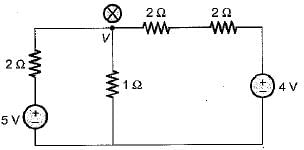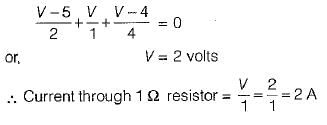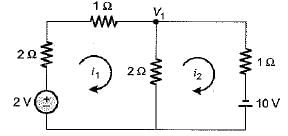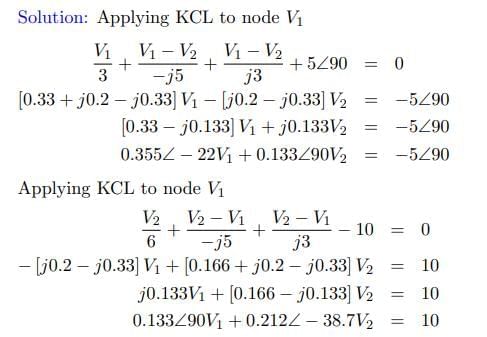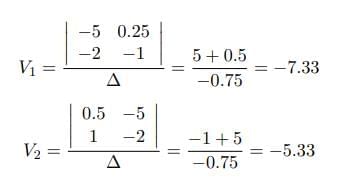Electrical Engineering (EE) Exam > Electrical Engineering (EE) Tests > GATE Electrical Engineering (EE) Mock Test Series 2026 > Test: Basic Nodal & Mesh Analysis - 1 - Electrical Engineering (EE) MCQ
Test: Basic Nodal & Mesh Analysis - 1 - Electrical Engineering (EE) MCQ
Test Description
10 Questions MCQ Test GATE Electrical Engineering (EE) Mock Test Series 2026 - Test: Basic Nodal & Mesh Analysis - 1
Test: Basic Nodal & Mesh Analysis - 1 for Electrical Engineering (EE) 2025 is part of GATE Electrical Engineering (EE) Mock Test Series 2026 preparation. The Test: Basic Nodal & Mesh Analysis - 1 questions and answers have been
prepared according to the Electrical Engineering (EE) exam syllabus.The Test: Basic Nodal & Mesh Analysis - 1 MCQs are made for Electrical Engineering (EE) 2025 Exam. Find important
definitions, questions, notes, meanings, examples, exercises, MCQs and online tests for Test: Basic Nodal & Mesh Analysis - 1 below.
Solutions of Test: Basic Nodal & Mesh Analysis - 1 questions in English are available as part of our GATE Electrical Engineering (EE) Mock Test Series 2026 for Electrical Engineering (EE) & Test: Basic Nodal & Mesh Analysis - 1 solutions in
Hindi for GATE Electrical Engineering (EE) Mock Test Series 2026 course. Download more important topics, notes, lectures and mock
test series for Electrical Engineering (EE) Exam by signing up for free. Attempt Test: Basic Nodal & Mesh Analysis - 1 | 10 questions in 30 minutes | Mock test for Electrical Engineering (EE) preparation | Free important questions MCQ to study GATE Electrical Engineering (EE) Mock Test Series 2026 for Electrical Engineering (EE) Exam | Download free PDF with solutions
Test: Basic Nodal & Mesh Analysis - 1 - Question 1
Of the two methods of loop and node variable analysis
Test: Basic Nodal & Mesh Analysis - 1 - Question 2
Which of the following is not true about the circuit shown below?
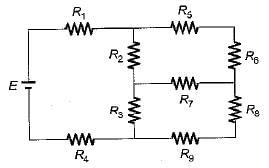

Detailed Solution for Test: Basic Nodal & Mesh Analysis - 1 - Question 2
Test: Basic Nodal & Mesh Analysis - 1 - Question 3
For the circuit shown below, the current through the 1 Ω resistor is
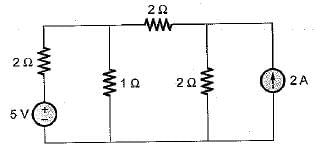

Detailed Solution for Test: Basic Nodal & Mesh Analysis - 1 - Question 3
Test: Basic Nodal & Mesh Analysis - 1 - Question 4
An electric circuit with 8 branches and 4 nodes will have
Detailed Solution for Test: Basic Nodal & Mesh Analysis - 1 - Question 4
Test: Basic Nodal & Mesh Analysis - 1 - Question 5
For the circuit shown below, the current through the 10 V battery is
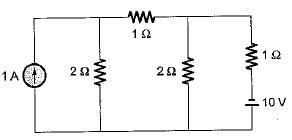
Detailed Solution for Test: Basic Nodal & Mesh Analysis - 1 - Question 5
Test: Basic Nodal & Mesh Analysis - 1 - Question 6
Find the value of the currents I1 and I2 flowing clockwise in the first and second mesh respectively.
Detailed Solution for Test: Basic Nodal & Mesh Analysis - 1 - Question 6
Test: Basic Nodal & Mesh Analysis - 1 - Question 7
In the network shown in Figure find the value of V2 using nodal analysis
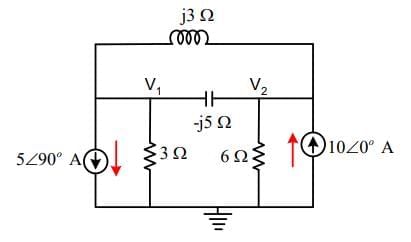
Detailed Solution for Test: Basic Nodal & Mesh Analysis - 1 - Question 7
Test: Basic Nodal & Mesh Analysis - 1 - Question 8
The number of KVL and KCL equations for the circuit shown below are
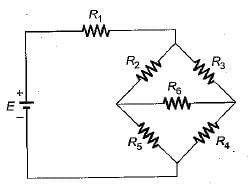
Detailed Solution for Test: Basic Nodal & Mesh Analysis - 1 - Question 8
Test: Basic Nodal & Mesh Analysis - 1 - Question 9
The current l flowing in the given figure is
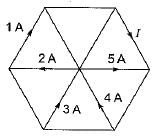
Test: Basic Nodal & Mesh Analysis - 1 - Question 10
The value of dependent source for the circuit shown below is
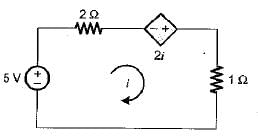
Detailed Solution for Test: Basic Nodal & Mesh Analysis - 1 - Question 10
|
26 docs|257 tests
|
Information about Test: Basic Nodal & Mesh Analysis - 1 Page
In this test you can find the Exam questions for Test: Basic Nodal & Mesh Analysis - 1 solved & explained in the simplest way possible.
Besides giving Questions and answers for Test: Basic Nodal & Mesh Analysis - 1 , EduRev gives you an ample number of Online tests for practice
|
26 docs|257 tests
|
Download as PDF



